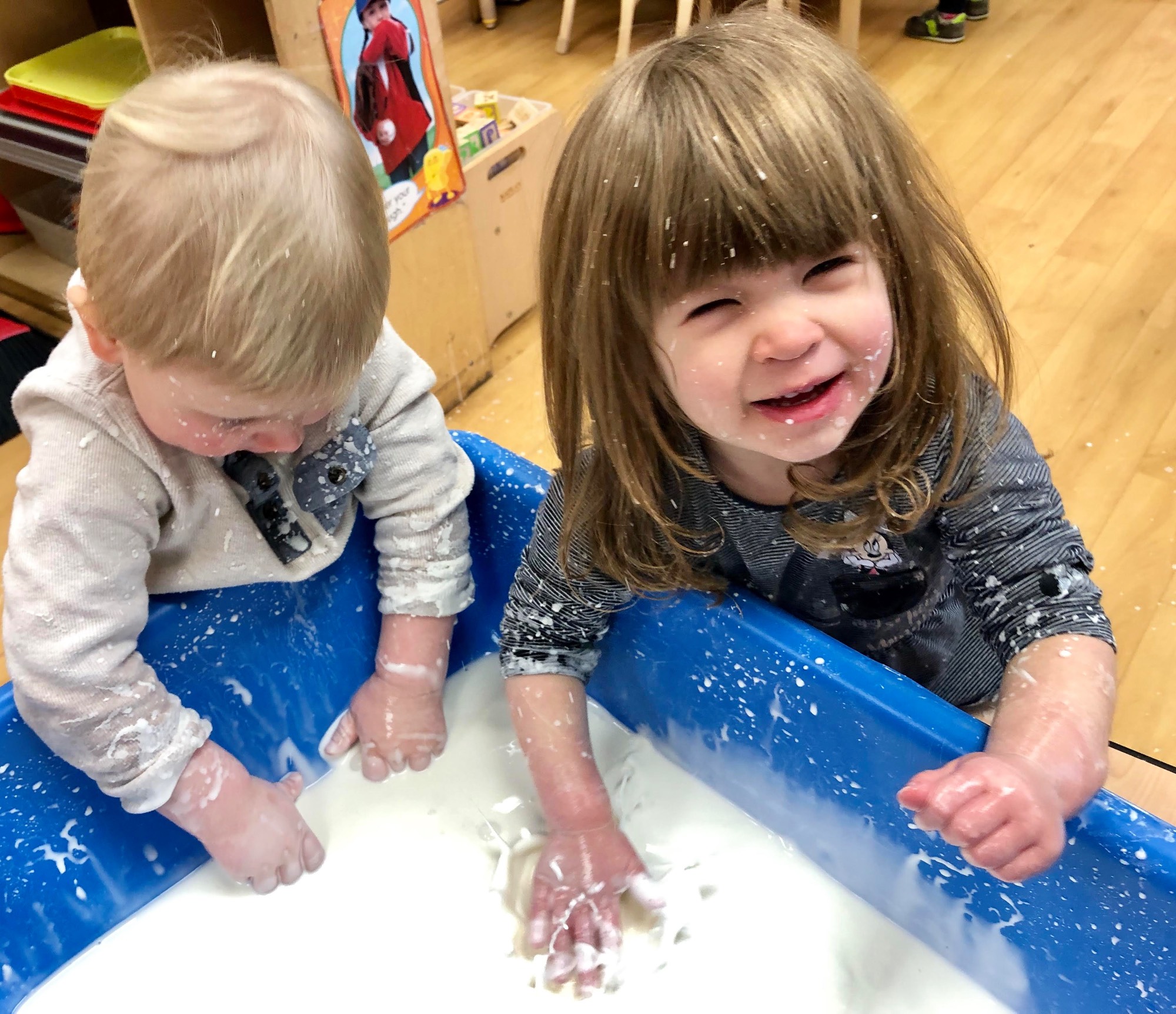Toddlers

18 months – 33 months
Ratio 1:6
Class Size: up to 12
Your toddler is growing so quickly! He/she is learning by touching, seeing, and exploring the world
around them. Little by little, they’ll gain all the skills and knowledge they need.
All families want their children to be happy, healthy, and successful. High-quality toddler programs have the same goals. These programs are warm, caring places that support your child and respect your family. Teachers make sure that children are safe and ready to learn. They form close, trusting relationships with you and your child.
You might have questions, like: What goes on in a toddler program? How do children learn when they can't say many words? This page is here to give you some of the answers. You'll find out how toddlers learn and develop, how teachers support their learning and development, and what a high-quality toddler program looks like. Let's get started!
How Toddlers Develop and Learn
Toddlers—children ages 16 to 36 months—learn a lot in a short time. Each child develops at a different rate, but there are practices that help all toddlers learn best.
Through relationships with caring adults. Teachers help your child feel secure and important. They create strong, positive bonds with your toddler that help him/her gain confidence so they can explore and learn.
Through active, hands-on play. Young children learn best when they can see, hear, taste, touch, and smell objects safely. Through exploration, they start to see how the world works and how to solve problems.
By connecting new ideas and skills to what toddlers already know and can do. All of us learn best when we can link new information to what we already know. Teachers help toddlers do this so that they build knowledge. Teachers also connect learning to whatever your child is interested in, like: balls, animals, or trucks!
By exploring and making sense of their world. Toddlers need a lot of experiences with objects and interactions with people to begin understanding them. Play is an important way your toddler explores materials, tests ideas, and starts figuring out why something happens.
With support from teachers. Working with toddlers involves so much more than caring for their physical needs. Some of the many ways teachers help toddlers develop and learn include:
- Asking questions to help children think more deeply about what they're doing.
- Encouraging children so they'll keep trying when they face a challenge.
- Acknowledging children's efforts: “You tried many times to stack three blocks, Anya!”
- Providing information so toddlers learn new skills, how things work, and about the world around them.
- Offering suggestions that help children try new things: “Edikan, using both hands to carry that basket might be easier than using just one hand.”
- Adding small challenges to activities so that children's skills keep growing.
- Observing children to discover how they learn and what they know and enjoy. Teachers use this information to extend children's learning: “Finn, I remember you telling me all about the fun you had at the beach with Grandma. I brought in some picture books about seashells and fish you might like.”
- Documenting what toddlers are doing and saying through photographs, videos, notes, assessments, and recordings.
- Evaluating the information they collect about children to decide what experiences to give children next.
(n.d.). Retrieved from https://www.naeyc.org/our-work/families/high-quality-program-for-toddler
